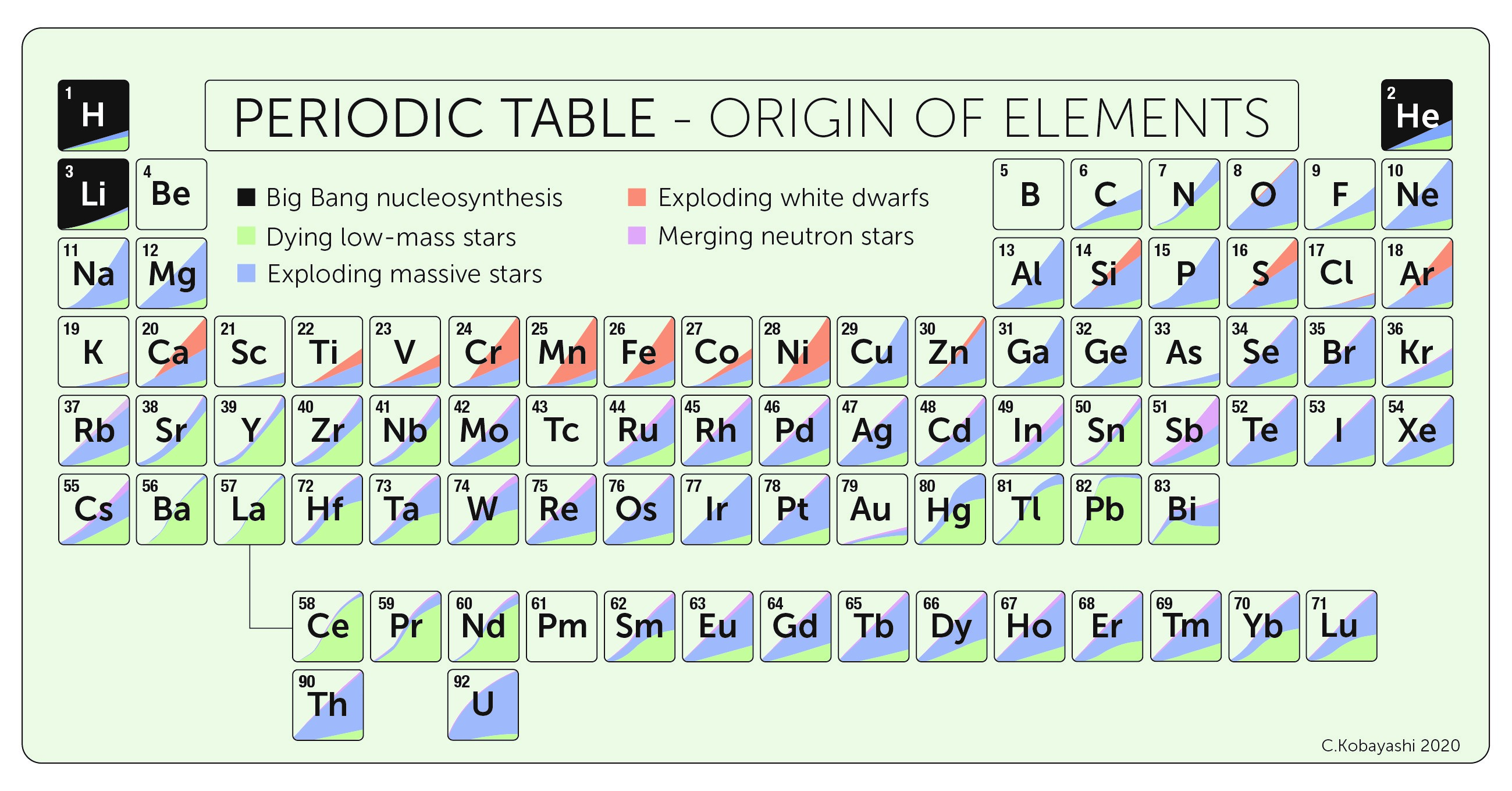We are made of “star stuff,” in the words of astronomer Carl Sagan, which is a poetic reminder that life on Earth is interlinked with cosmic processes that date back billions of years.
But exactly which stars make what stuff is still a matter of some debate. While we know that heavy elements such as gold, silver, and iron are forged by the deaths of stars, or in cataclysmic stellar collisions, it’s not clear what proportion of elements originate from each source.
That’s why scientists led by Chiaki Kobayashi, an astrophysicist at the University of Hertfordshire, developed an updated Periodic Table that includes the stellar origins of elements ranging from carbon through uranium.

The results reveal a mysterious gap in our knowledge about the genesis of gold in the cosmos, among many other insights published on Tuesday in The Astrophysical Journal.
The researchers also emphasized that a clear understanding of elemental lineages not only helps us quantify the star stuff in our bodies, but also the intricate evolution of the universe as a whole.
“Stars in the present-day galaxy are fossils that retain the information on the properties of stars from the past,” Kobayashi and her colleagues wrote in the study. “This approach is called Galactic archaeology and can be applied not only to our Milky Way Galaxy but also to other galaxies.”
Scientists are able to estimate the abundance and origin of elements through a variety of techniques. Details about the chemical composition of a star can be directly observed in its light spectrum, and stellar evolution models predict which elements should be created by stars depending on their mass, age, and location.
The Big Bang, the event that kicked off the universe, is the main source of the lightest elements: hydrogen, helium, and lithium. Stars, meanwhile, forge complex heavy elements, including those that are essential for life, such as carbon, oxygen, and nitrogen, or flashy metals like gold, silver, and iron.
The origins of nearly all elements can be traced to several sources, but the new study constrains the contribution of each type of stellar death, explosion, or crash. Modeling such a complex problem requires estimates of the abundance of various star types across time and space, as well as the frequency of the powerful cosmic processes that produce them.
“The relative contribution of each source depends on time and environment (i.e., mass and type of galaxies), and hence it is necessary to use galactic chemical evolution (GCE) models to understand this question,” the team said in the paper.
Collisions between neutron stars, the dead husks of some massive stars, are relatively rare compared to other scenarios, so they are not as prolific when it comes to element creation.
That said, scientists have previously suggested that merging neutron stars may be the most important source of gold in the universe.
The new models published by Kobayashi’s team concluded that too few neutron star collisions have occurred across cosmic time to produce the amount of gold that is estimated to exist in the universe. The team suggests that a special type of spinning supernova, with strong magnetic fields, might explain this “mystery of the missing gold,” as it was described in a release.
Another possibility is that the study underestimated the number of neutron star collisions, given that astronomers have only just begun to directly observe these wild encounters within the past few years.
The breakdown of elements that living stars will create, and eventually sow into the universe, are also visualized in the above Periodic Table. Stars that are over eight times as massive as the Sun are destined to explode into pyrotechnic supernovae. This process is the main source of certain elements, such as neon, silver, and iridium.
Smaller stars, like the Sun, don’t undergo a supernova event. As they are dying, these stars shed their outer gassy layers into their surroundings, a dynamic that enriches the next generation of stars with new elements. This process is a major source of nitrogen, lead, and strontium.
The burned-out corpses of stars like the Sun, known as white dwarfs, sometimes explode in a special type of supernova that supplies much of the universe’s manganese, iron, and nickel.
The phrase “star stuff” encapsulates all of these intricacies in a lovely and succinct way. But behind those simple words lies a mountain of fascinating and ever-evolving research into the mind-boggling variety of elemental origin stories out there in the stellar wilds.
from VICE US https://ift.tt/2Ec8ZfC
via cheap web hosting
No comments:
Post a Comment